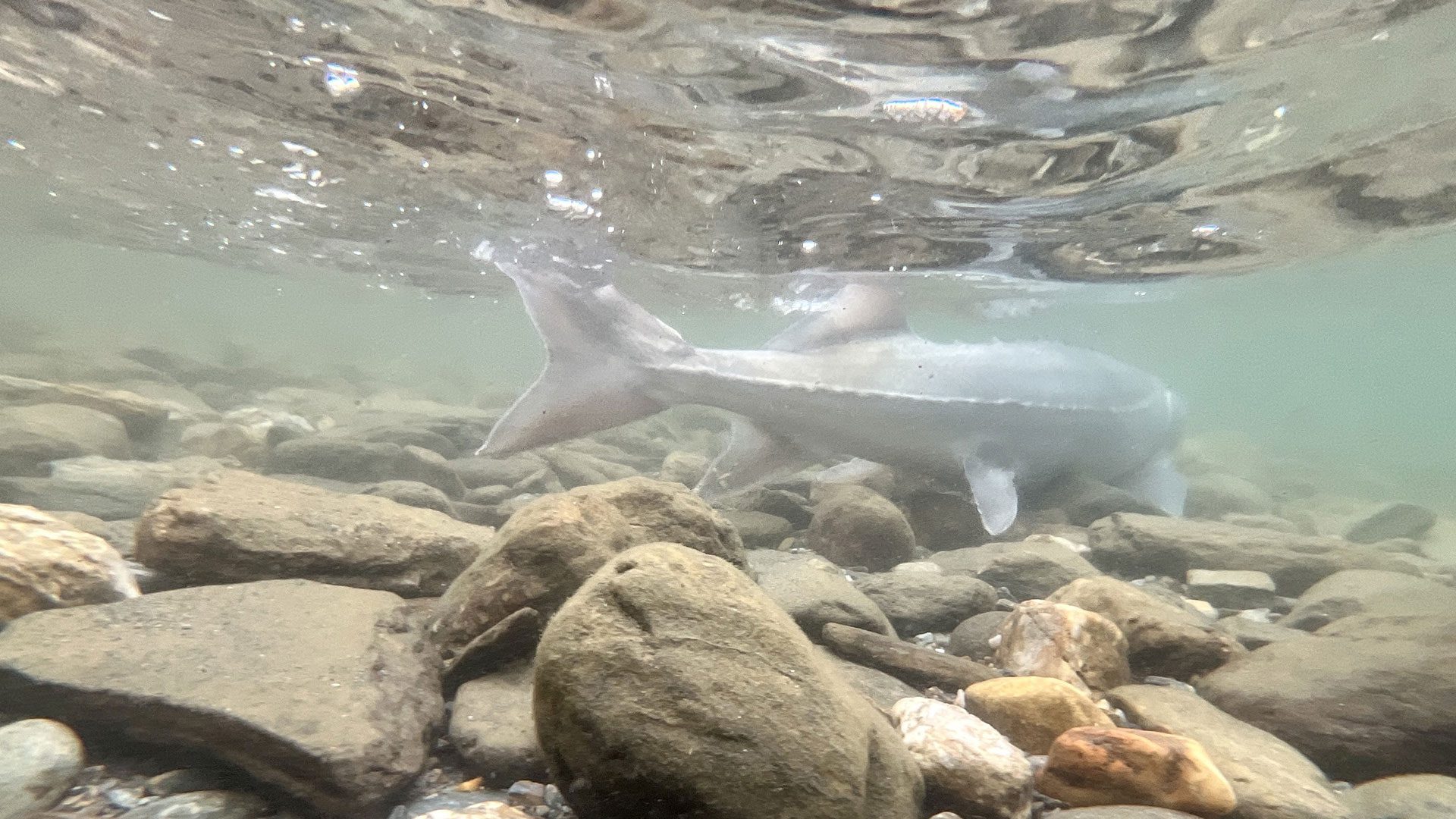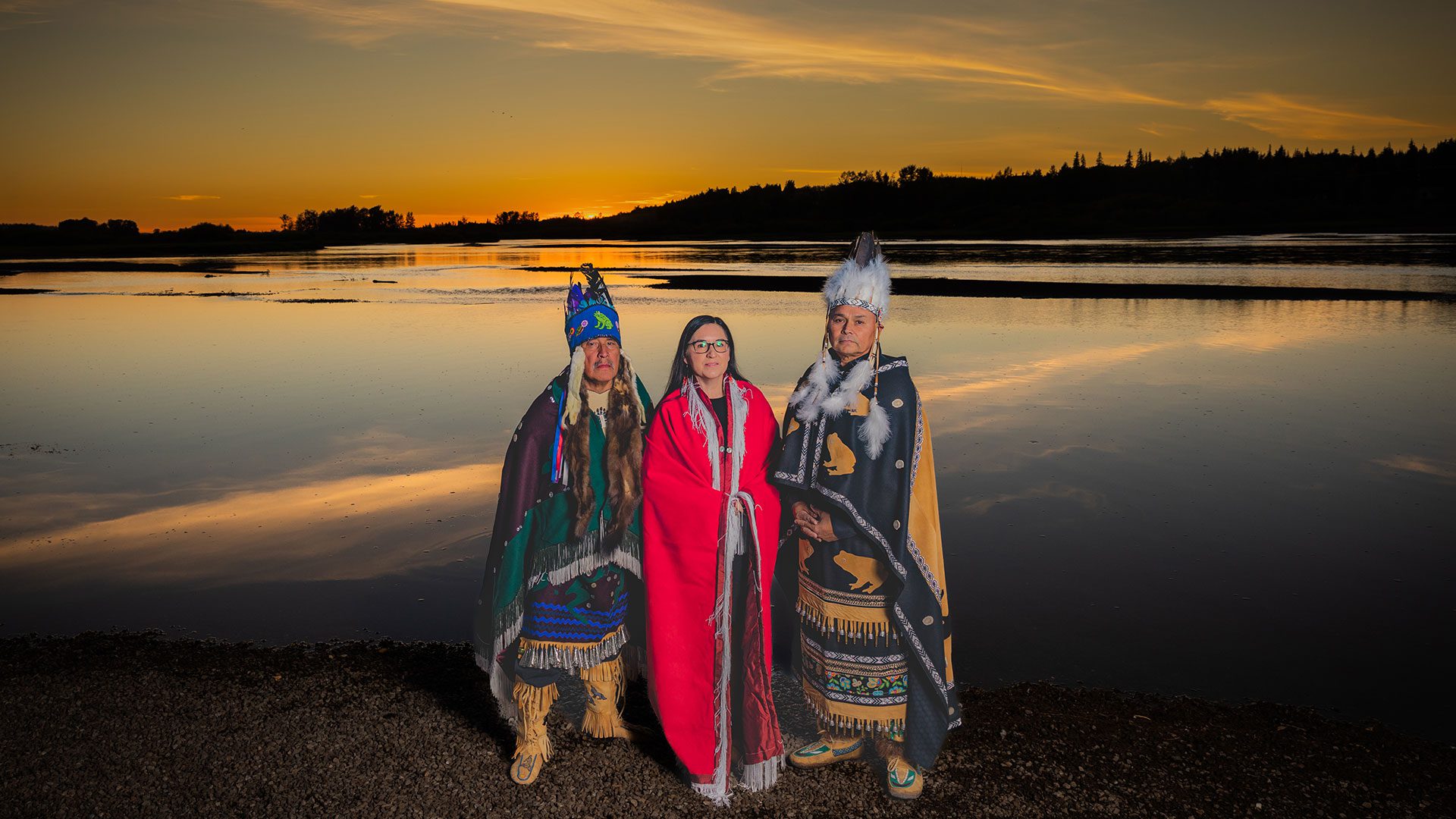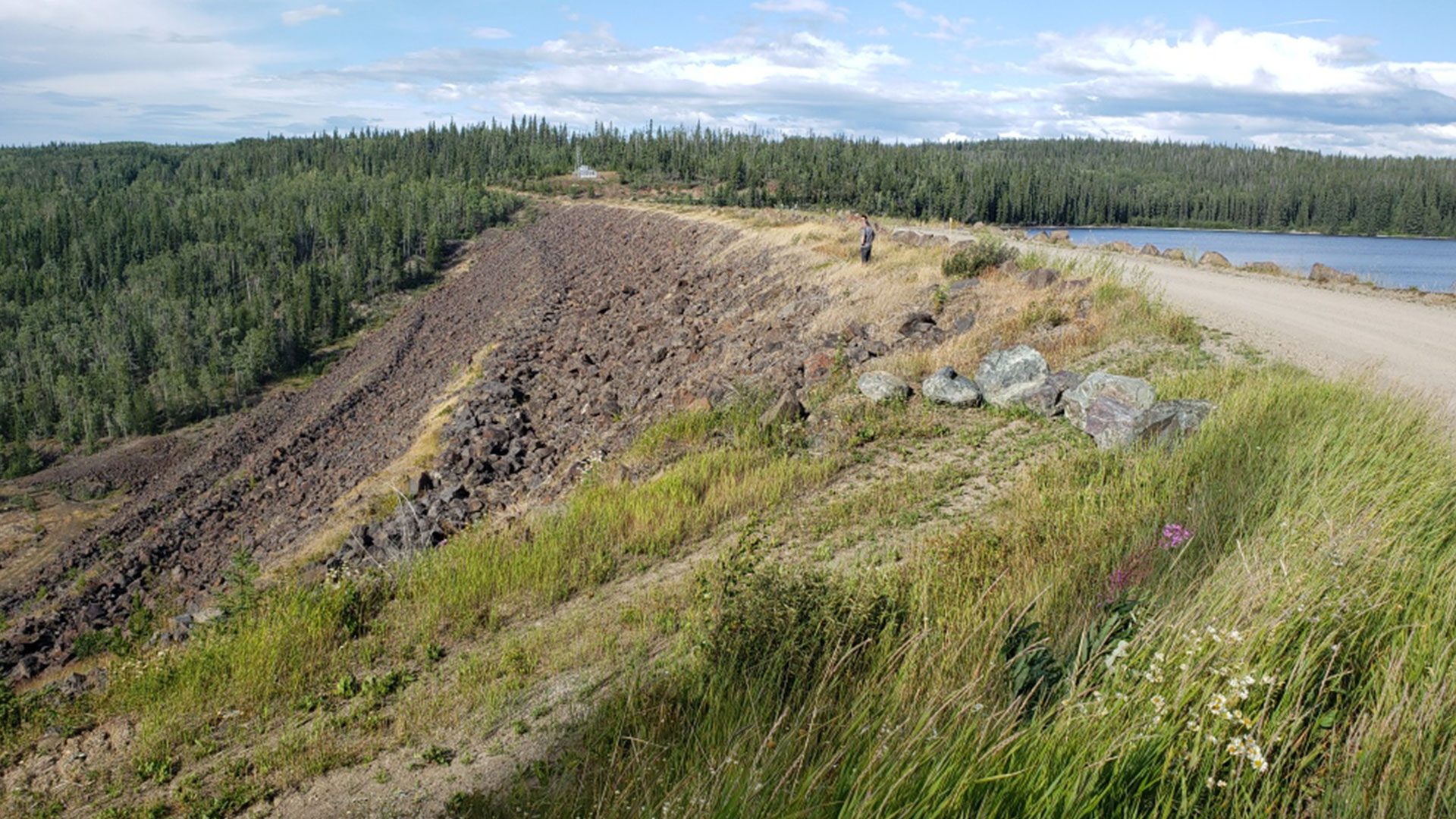Nechako River First Nations want mining giant Rio Tinto to increase the water flow to the Nechako River.
Saik’uz, Stellat’en and Nadleh Whut’en First Nations along the Nechako River have expressed concerns about the low water in the river due to the Kenny Dam, which was built but Rio Tinto Alcan in the early 1950s.
Nechako translates to “Big River,”
But in an interview with APTN News, Saik’uz First Nation Chief Priscilla Mueller said the water is so low right now that people can walk to the middle of it.
“Our concern is that River flows are very low in the Nechako and have been since the Kenny Dam was built, and we just feel like not much has been done in even the eleven years since we started kind of investigating and looking into the river, “ she said.
Last month, nearly a dozen white sturgeon were found dead in a one-week period in the Nechako region, according to a public statement from the BC Ministry of Land, Water and Resource Stewardship.
They did not have answers on the death of the sturgeon.
“Provincial scientists have taken samples for laboratory testing, but they do not believe the fish died from disease, chemical exposure or because of angling or gill net fisheries. The fish show no visible signs of injury, “ the statement read.

The White Sturgeon in the Nechako River are listed as endangered species, with an estimated 300 to 600 in existence.
The nations on the Nechako River have harvested sturgeon historically, but with the declines, Mueller can’t remember the last time it was harvested in her community.
The salmon numbers are too low to catch as well.
The Saik’uz First Nation has been in a lengthy legal battle with Rio Tinto and the federal and provincial governments over the aboriginal rights to fish the Nechako River.
In January this year, the B.C. Supreme Court ruled that the Kenny Dam “caused or contributed to the substantial decline” in Nechako White Sturgeon and salmon populations.
Muller added that B.C. and federal governments need to take steps to regulate the river flow.
“Justice Kent’s comments were the government needs to step up, and they need to regulate that flow, and they need to give regulation to Rio Tinto and release more water, and that’s what we’re asking that they release more water, she said.
In a public statement, Stellat’en First Nation Chief Robert Michell expressed his concerns and frustration over the state of the Nechako.
“Since time immemorial, the Stellat’en people have lived beside and on the Nechako River. The river was our economic and spiritual lifeblood—our grocery store, our highway, our church. It was taken away from us and converted into an industrial canal without any consultation or compensation, “ he stated.

Michell added that restoring the white sturgeon numbers would help all the people in the Nechako region.
“This infringement must stop, and the river and its White Sturgeon populations restored to health. When it is, everyone in the region will benefit, “ he said.
In an emailed statement to APTN News, Andrew Czornohalan, director of power and projects for Rio Tinto B.C., said they are aware of the sturgeon death in the Nechako and Fraser Rivers, and they are assisting scientists.
“We are deeply saddened by this and are working with our partners such as the Nechako White Sturgeon Recovery Initiative (NWSRI) and the province of British Columbia. We have offered technical capacity via the Water Engagement Initiative to identify the possible causes of this unprecedented event, “ the statement read.
Czornohalan added that Rio Tinto is working with local First Nations on the Nechako water flow.
“Rio Tinto believes that governance of the flows on the Nechako River should be an inclusive process. Over the last two years Rio Tinto has been working with First Nations and local communities to improve the water flow into the Nechako River while still monitoring for flood risks in Vanderhoof, “ he said.

The First Nations say they have had talks with the B.C. government and are now starting discussions with the Federal government, but there is no progress with their concerns.
We contacted the federal government for comment but did not receive a response before airtime.
Muller confirms that they have been building a relationship with Rio Tinto for a few years, but the increase of the Nechako River flow isn’t happening fast enough.
“I just want to continue building our relationship with Rio Tinto, but we need some decisions made quickly; we know our membership are not very happy, and I know other communities are not very happy; we are looking at next steps on what is our plan.”









